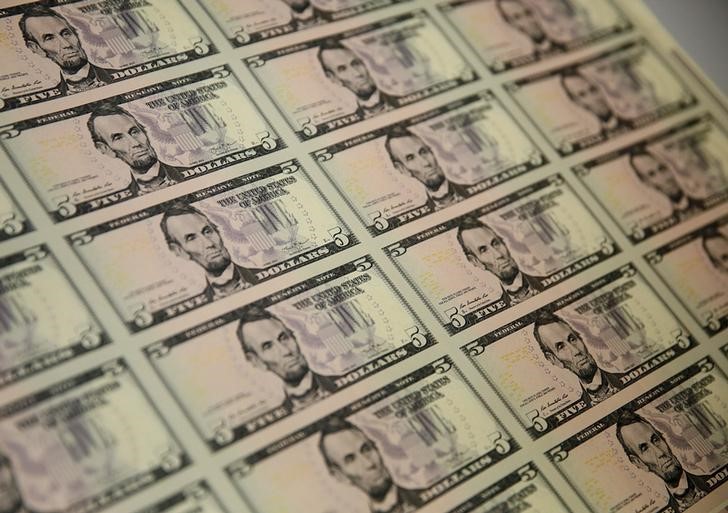Walmart halts H-1B visa offers amid Trump’s $100,000 fee increase - Bloomberg
Investing.com - The U.S. dollar edged higher Monday, rebounding after last week’s losses although sentiment remains wary ahead of key inflation data and amid worries over the health of the U.S. regional banking sector.
At 04:15 ET (08:15 GMT), the Dollar Index, which tracks the greenback against a basket of six other currencies, traded 0.1% higher to 98.270, after recording last week the biggest five-day retreat since late July.
U.S. CPI data due
The U.S. currency has stabilized on the back of a rebound on Wall Street despite the sudden return of market scrutiny on U.S. regional banks, after two lenders – Zions and Western Alliance Bancorp – reported problems with loans associated with fraud.
“Concerns about the health of regional banks and the broader quality of credit in the U.S. remain very central for FX markets,” said analysts at ING, in a note.
“Indications that lending issues don’t extend beyond Zions Bancorp and Western Alliance could offer some further relief to the dollar, but it might not be enough to fully price out concerns about the underlying health of the credit market and have the greenback reclaim all losses.”
Elsewhere, the U.S. Bureau of Labor Statistics is expected to publish the delayed September consumer price index on Friday, despite the ongoing U.S. government shutdown.
“We are aligned with consensus in expecting a 0.3% MoM core read – which should further endorse a 25bp cut by the Fed next week,” said ING. “Barring major deviations from consensus, the inflation release should not have major FX implications, with jobs markets playing a more important role for rate expectations.”
Euro steadies on French political calm
In Europe, EUR/USD traded 0.1% higher to 1.1659, with the single currency steadying after a degree of calm returned to the French political situation, with Prime Minister Sebastien Lecornu surviving two no-confidence votes last week after agreeing to delay pension reform.
“The calm on the French political side allowed the euro to recover a bit, but it’s hard to get too comfortable with France. S&P downgraded the country from AA- to A+ in an unscheduled move on Friday,” said ING.
German producer prices fell 0.1% on the month in September, an annual drop of 1.7%, suggesting that underlying price pressures remain extremely limited in the eurozone’s largest economy.
GBP/USD traded 0.1% lower to 1.3421, with sterling largely stable as November’s budget draws closer.
“Expect a steady flow of information about the content of the November budget in the coming weeks. That appears like a double-edged sword for sterling. Any concerns about fiscal sustainability will hit back-end gilts and spill over into the pound, while higher taxation should dampen growth and raise chances of earlier BoE easing,” said ING.
Yen weakens as Takaichi’s star rises
Elsewhere, USD/JPY traded 0.1% higher to 150.81, with the Japanese yen weakening slightly amid renewed bets that Liberal Democratic Party leader Sanae Takaichi will be appointed the country’s next prime minister.
Takaichi is widely viewed as a fiscal dove, pointing to more government spending and accommodative financial conditions in the coming months. Takaichi is also expected to oppose more interest rate hikes by the Bank of Japan, with the central bank set to decide on the matter next week.
USD/CNY slipped marginally to 7.1242, after gross domestic product data for the third quarter read mildly above expectations.
GDP grew 4.8% year-on-year, more than forecasts of 4.7% but slower than the 5.2% growth in the second quarter. The print was also China’s weakest GDP reading since the third quarter of 2024.
Still, China’s year-to-date GDP remained above Beijing’s 5% annual target, with exports the key driver, while headwinds from weak spending and private investment remained.
AUD/USD gained 0.1% to 0.6501, with the Aussie dollar, a gauge of Asian risk appetite, advancing.
